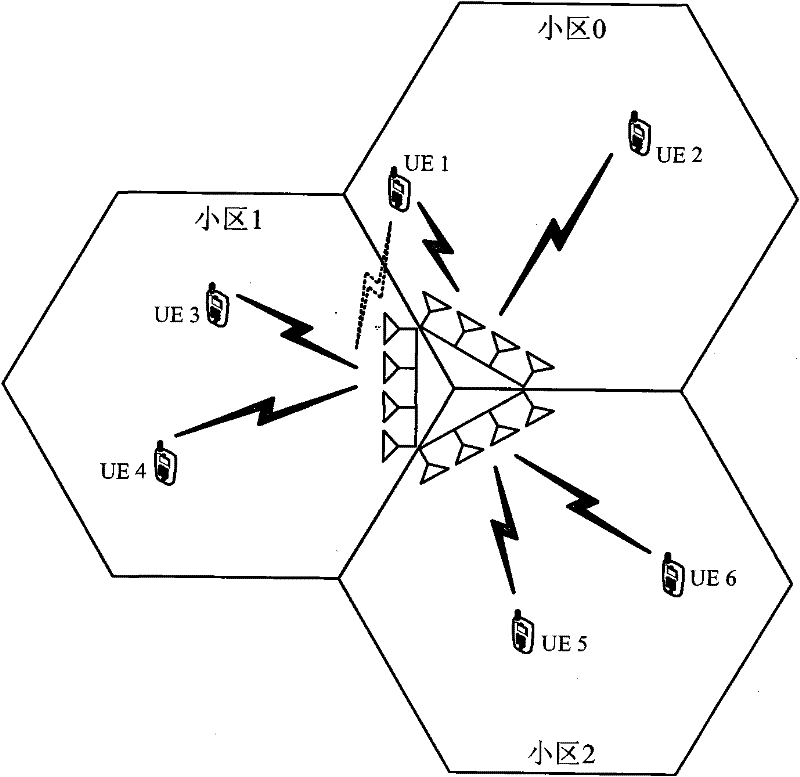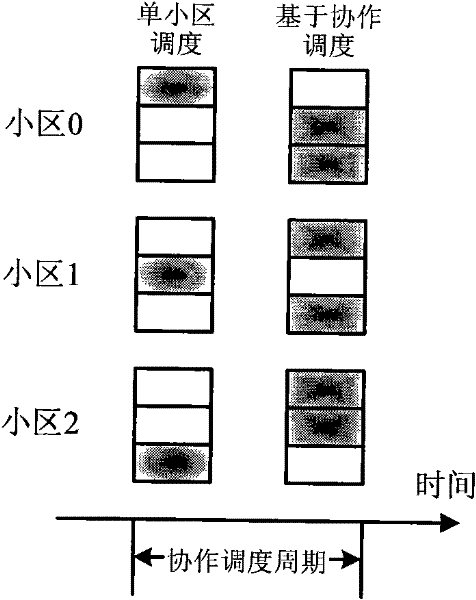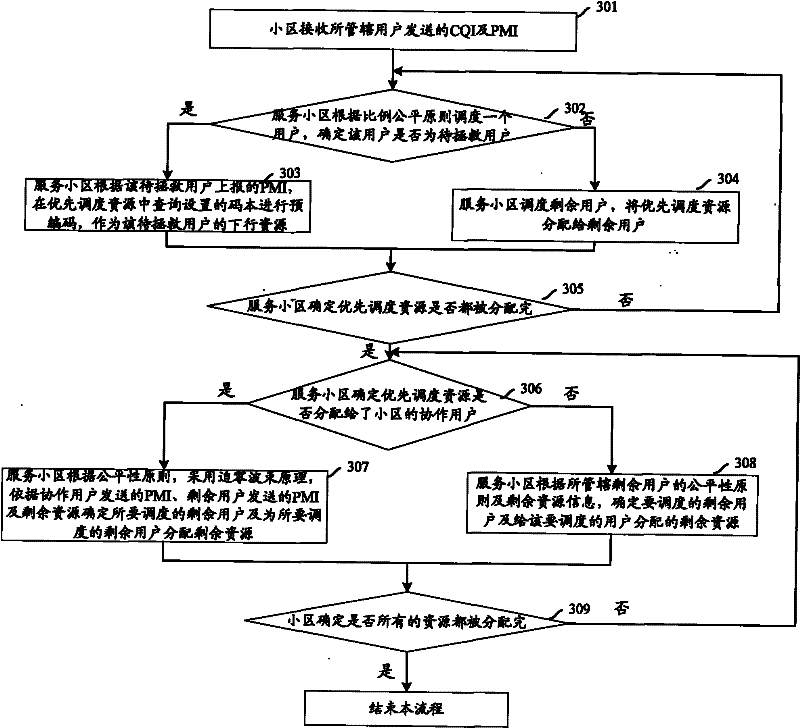Method for the same base station to control multi-cell system to allocate downlink resources
A base station control, multi-cell technology, applied in the direction of preventing/detecting errors through diversity reception, electrical components, wireless communication, etc., can solve the problems of occupying uplink resources, high computational complexity, sensitive to non-ideal characteristics of downlink channels, etc. The effect of reducing the amount of data and the amount of calculation
- Summary
- Abstract
- Description
- Claims
- Application Information
AI Technical Summary
Problems solved by technology
Method used
Image
Examples
Embodiment Construction
[0036] In order to make the object, technical solution and advantages of the present invention clearer, the present invention will be further described in detail below with reference to the accompanying drawings and examples.
[0037] It can be seen from the existing technology that when allocating downlink resources for each cell controlled by the same base station, CoMP is implemented, so each cell adopts the cooperative precoding technology of the SLNR criterion, and the use of this technology requires the influence of neighboring cells Interfering users report the downlink channel correlation matrix, and the precoding process requires a large amount of calculation. In order to overcome the above problems, the present invention divides the downlink resources of the serving cell into priority scheduling resources and remaining scheduling resources for user allocation in the serving cell: for the priority scheduling resources, that is, the main sub-band of the serving cell, ac...
PUM
 Login to View More
Login to View More Abstract
Description
Claims
Application Information
 Login to View More
Login to View More - R&D
- Intellectual Property
- Life Sciences
- Materials
- Tech Scout
- Unparalleled Data Quality
- Higher Quality Content
- 60% Fewer Hallucinations
Browse by: Latest US Patents, China's latest patents, Technical Efficacy Thesaurus, Application Domain, Technology Topic, Popular Technical Reports.
© 2025 PatSnap. All rights reserved.Legal|Privacy policy|Modern Slavery Act Transparency Statement|Sitemap|About US| Contact US: help@patsnap.com



